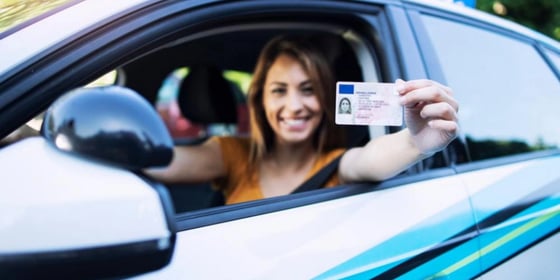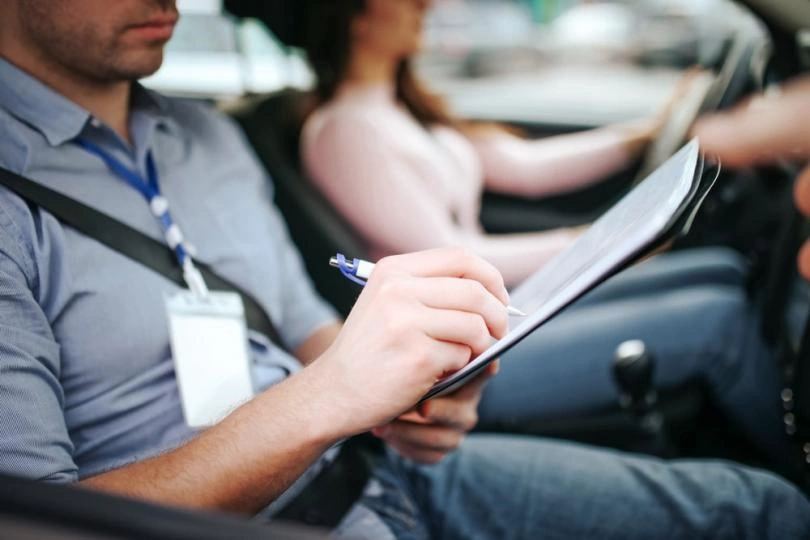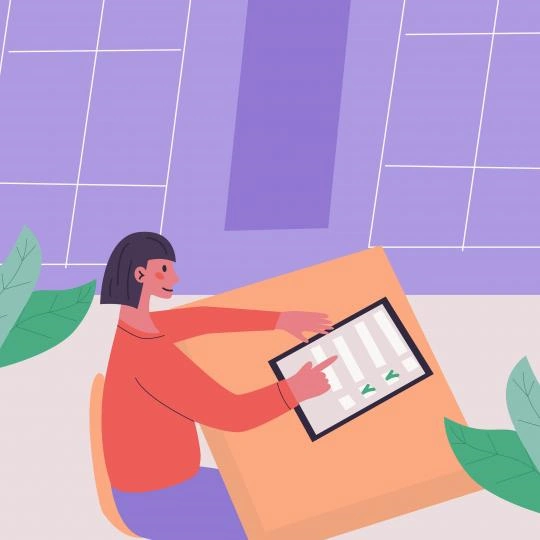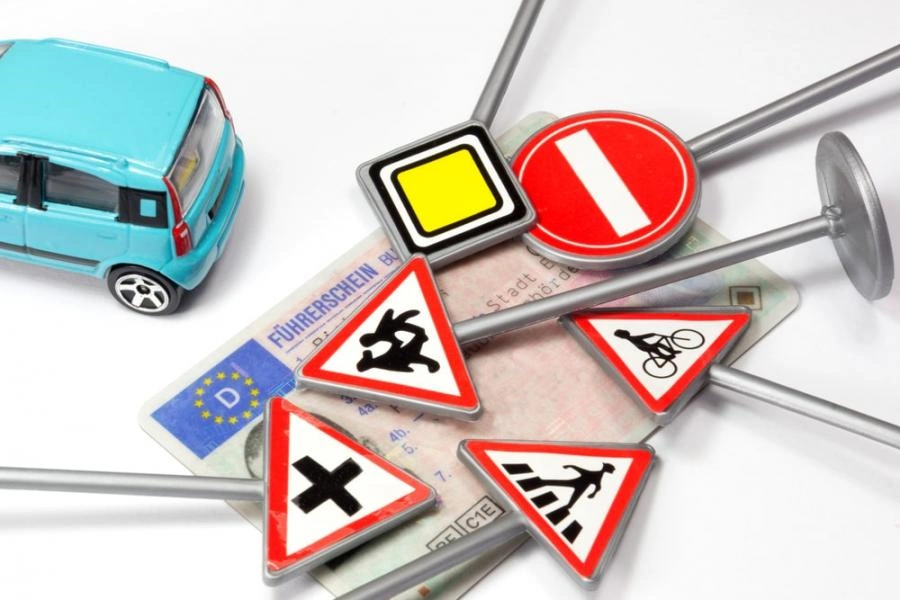Driving licence in Germany for foreigners

Contents
Have you ever wondered how to get a German driver's license at a certified driving school?
If you want to know everything about a driving licence in Germany, you have come to the right place! Check out our guide to getting a German driver's license.
Are you wondering whether you can drive in Germany with your foreign driver's licence, the licence from your home country? Or perhaps, you are about to receive driving lessons with a driving instructor at one of the official driving schools in Germany.
In this article, you will learn more about whether or not you can continue to use your original license, all the required documents in case you are obtaining a German license, how a German driving test is structured (there is a written exam and also a practical road test!), and some important traffic laws. Also, read on if you'd like to convert your international licence into a German one!
Can a foreigner get a driver's licence in Germany?
Yes! You can take a driving test in Germany and obtain a German licence.
The driving licence is also valid in the entire EU/EEA area (European Union/European Economic Area).
How long can you drive in Germany with an international driving permit?
If you already have a foreign driver's licence from your home country and do not intend to move to the Federal Republic of Germany, it is possible to drive a car with a valid foreign driver's licence, even if it does not originate from the EU/EEA. In many cases, it is necessary for you to provide a German translation of your foreign driver's license for this purpose.
However, if you move your residence to Germany, a foreign driver's license is only valid for up to six months. Afterward, it is no longer recognized by the authorities. You should therefore apply for a German driver's license before this period for your foreign license expires if you wish to continue driving a car in Germany.
Note: In exceptional cases, the six-month period for your foreign driving licence may be extended, especially if you can prove to the authorities that you will not have your legal residence in Germany for more than 12 months.
Which countries have a special agreement with Germany for the exchange of driver's licenses?
Citizens of the following countries can exchange their foreign driving licence for a German one relatively easily: Andorra, Hong Kong, Monaco, San Marino, Namibia, Australia, New Caledonia, Canada, New Zealand, Channel Islands, Croatia, Singapore, French Polynesia, South Africa, Isle of Man, South Korea, Israel, Switzerland, Japan, U.S.A. (certain states).
If your country is not listed, you will need to take a driving test to obtain a German driver's license.
From what age can you get a German driver's license?
The minimum age for acquiring a driving license in Germany is 18. Depending on the class of vehicle you want to drive, it may be even older.

If you regularly attend theory classes and take driving lessons, it will take 3 to 5 months to get your license. A total of 14 theory units (90 minutes each) can be completed in 2-week crash courses at many driving schools. If you otherwise assume one theory unit per week, you will need 14 weeks for this.
The practice drives also last 90 minutes each. If your average is 30 hours and one unit per week, it takes 15 weeks. If the student wishes to do everything faster, there is an option for that as well: Many driving schools offer fast-track courses that prepare you for the theory and practical test within 1 to 2 weeks. Of course, this depends on your previous knowledge, talent, commitment and free time.
Remember that it usually takes at least 5 weeks for the local authorities (the issuing authority, e.g. your local driving licensing office) to process your application. So apply on time, because only then you will be able to take your exams. If you fail an exam (for example the road test), you can retake it after 2 weeks.
Want to study in Germany?
To obtain a driving licence, you will need to take a number of steps, such as submitting an application at the district city hall or city hall and passing two driving tests:
1. Take a first aid course
In order to submit a driver's license application (Antrag auf Erteilung einer Fahrerlaubnis) to your local authority, you will need proof that you have taken a first aid course.
2. Take an eye test and a biometric passport photo
These are additional requirements for applying for a driver's license. To do this, have your eyes examined by an optometrist or ophthalmologist. You can have the biometric passport photo taken at a local photo studio, for example.
3. Register with a driving school
Anyone who is interested in driving lessons/driving licenses and would like to obtain a German driving license must do so through a certified driving school. The driving school will provide you with theory and practice lessons for a fee, as well as a car to drive with the driving instructor for practice purposes.
Note: If you take driving lessons at a driving school in Germany, keep in mind that it will usually be in a car with a manual transmission (stick shift).
Take the following documents with you when you register:
- Identity card/passport
- Biometric photo
- Proof of an eye test
- Certificate of a first aid course
Note: Learning materials are available as learning software, printed paper questionnaires, or textbooks. Since the introduction of computer-based theory tests, the trend has clearly moved toward online learning systems and apps for smartphones and tablets.

4. Prepare for the theoretical test
At the beginning of the training, theory lessons are scheduled at the driving school. The training for class B, the classic passenger car driving license, comprises 14 double lessons of 90 minutes each - divided into 12 double lessons of basic material and two double lessons of additional material.
Tip: The better you do in the course, the less you have to study for the theory test at home. If you take a fast-track course, the theory course is over in just one week.
What does the theoretical test involve?
After you have completed the theory lessons, your school will register you for the exam, which is a written test. The exam consists of 30 multiple-choice questions. There can be several correct answers to a question. If you get more than ten minus points, you have not passed the exam.
Note: In addition to the German language, you can take the theory test in the following languages: English, French, Greek, Italian, Polish, Portuguese, Romanian, Russian, Croatian, Spanish, Turkish and Arabic.
5. Take practical driving lessons
The first practical lessons often start at the same time as the theory course. In the beginning, there is basic practical training. These are the classic first lessons with many laps around the driving school grounds. The number of hours depends on your individual skills. This is followed by at least five lessons of 45 minutes each on federal or country roads and seven special lessons - four of them on the highway and the remaining three at dusk or in the dark. This is the minimum number of practical lessons for everyone pursuing a driving licence.
Beyond these compulsory hours, you decide together with your instructor whether and how many additional hours you need to be really fit for the practical test. With every driving lesson, you gain more confidence in driving and thus increase your chances of passing the driving test. Even if each driving lesson costs extra, you would be saving in the end.
How many driving lessons do you need?
- Basic training on the practice range as required
- 5 driving hours on federal or country roads
- 4 driving hours on the freeway (Autobahn)
- 3 driving hours at night
- Additional hours after consultation with the instructor
What does the practical driving test look like?
Once you and your instructor have decided that you are proficient enough to drive a vehicle, you can take the practical test. To take practical exams, you must meet three conditions:
- You may be only one month younger than the minimum age for the appropriate driving licence class.
- You must have passed the theoretical test.
- The instructor has to have confirmed your practical training to the authorities.
If all these requirements are met, you can take the practical exam at your place of residence. Again, the instructor will take care of registering you for the test. In most cases, you will take a driving lesson immediately before the test in order to prepare yourself optimally for the test. During the subsequent test, the first thing that will take place is the safety check of the vehicle. The examiner will ask you three questions about your car. These will include things like the various fluid levels of the car, the function and condition of the headlights, or the condition of the tires.
After that, it's time to go for a drive. During this, the examiner will set the route and give you various tasks, such as backing into a parking space, starting on an incline, or doing an emergency stop. Provided you don't make too many minor mistakes and no serious ones, you pass the test. If you fail, you will have to pay the full test fee again at the next attempt after two weeks at the earliest.
The driving test lasts between 30 and 45 minutes in total. Usually, the examiner sits in the back seat. They assess your driving in terms of safety, competence and composure. Your instructor sits next to you so that they can take control in case of an emergency.

Conclusion
If you cannot simply convert your foreign driving permit or driving licenses from your home country into a German driving licence, you will have to take lessons and pass an examination in Germany.
Your way to get a German license and to finally drive in Germany summarized:
- Find a suitable driving licence school.
- Register with the school and your local driving licence authority.
- Complete theoretical training (14 double hours for class B).
- Pass the theory test.
- Take practical training (at least 12 driving hours for class B).
- Pass the practical test and obtain your driving licence!

